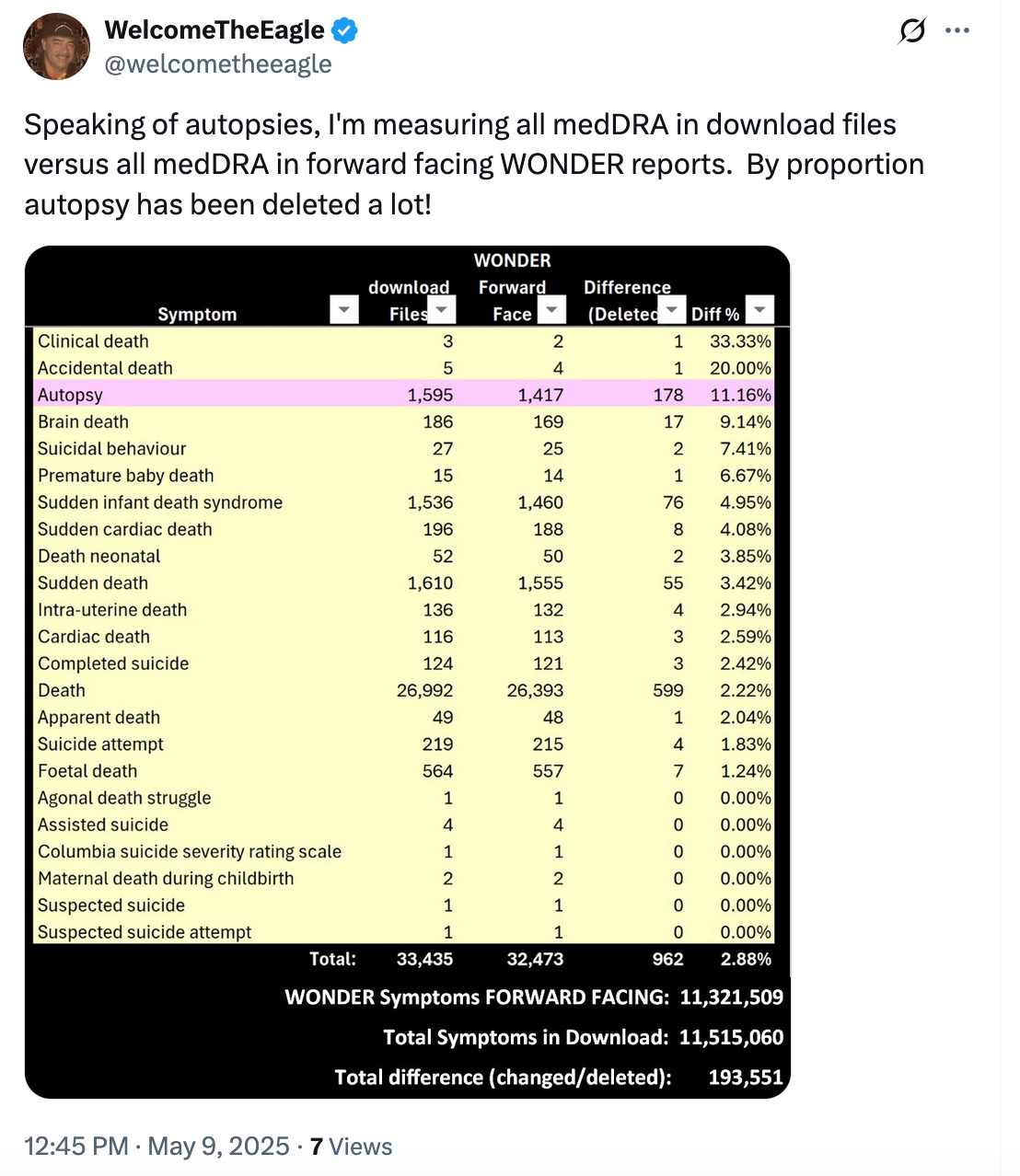The VAERS analysts on Twitter are discussing whether CDC is intentionally deleting symptoms in followup reports.
In case you were not aware, the CDC has now started publishing followup reports on the CDC WONDER website. You can read about it in this article by
But are they deleting symptoms in the followup reports?
On first glance, it does appear that CDC is deleting a lot of symptoms in these followup reports.
Now this is obviously a bad thing because if someday the CDC decides that the final followup report will be displayed as the default, then a lot of symptoms associated with that VAERS report would disappear!
But I think there is something else going on here.
Take a look at this example of the list of symptoms from my VAERS viewer tool
I built this viewer so I would be able to compare side-by-side what changed in the symptoms list.
Normally, if each of the four “ORDER” numbers was matched to each new followup report, you would expect the four columns to have a lot of overlapping symptoms. After all, they are all just reporting the same case!
But in reality,
a) there is almost no overlap
b) and the symptoms seem to be selected continuously in alphabetical order after omitting already selected symptoms (for example look at how the symptoms are distributed between ORDER 2 and ORDER 4, in the first 10 rows)
And you will see the same pattern in a lot of followup reports.
Here is what I think is happening:
I think the user interface used by CDC employees for adding followup reports has been designed to make it easy to omit existing symptoms and to add only new ones (but I don't know why they made that decision)In my view this means the actual symptom list for a given VAERS report should be a combination of all the symptoms across all the followup reports.






I don't know if you've taken into account order 4 was received BEFORE order 3 per "entered" time stamp? Also the the way the raw data is presented in the raw data is alphabetical from left to right, 5 columns at a time. You maybe on to something but VAERS seems to always hide nefarious intent behind plausible deniability.